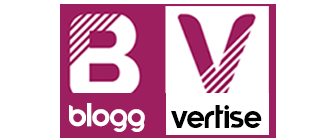What better way to cater to your consumers than by asking them what they want? Customer survey provide feedback that can guide you in making effective business decisions, but collecting valuable data requires more than simply asking your customers what they like and dislike. Small differences in the way you frame questions can have a significant impact on results; good survey design doesn’t just ask the right questions, but asks them in the right way.
Follow these steps to get started building an effective Customer survey that will benefit both your customers and your business.
Step 1: Determine What You Know
You’re sending out a survey to collect fresh insights that you didn’t have before – so, first figure out what you do already know. If your survey is focused on product development, analyze your current offerings. If you’re focusing on marketing, assess your current marketing approach. Analyzing the data you already have will help you avoid collecting redundant information. Plus, reviewing what you know sets you up to better identify what you don’t know – and that’s where your survey comes into play.
Step 2: Brainstorm the Answers
It may seem counterintuitive, but the best way to start building a survey is not to brainstorm potential questions, but actually to brainstorm answers.
We know what you’re thinking: isn’t the point of a survey to ask the customers for the answers? That’s true, but it’s important to determine what types of answers you want, in order to gather actionable results.
Ask yourself what you hope to learn. You might want an answer like, “Customers wish we offered ___ service,” to help you choose where to allot future time and money. Or, maybe you are looking for a more complex answer, like “Concern about the environment [does/does not] influence customers’ purchasing decisions.” Jot down each type of answer you want to receive, leaving a blank in place of the thing you want to learn. Developing questions based on the answers will guarantee that you ask the necessary questions, and phrase them to get responses that align with your goals.
Step 3: Design the Questions – Customer Survey
As you form the questions, think about how best to get the responses you seek. Use straightforward language and simple sentences, to ensure respondents understand what’s being asked quickly, and on the first read. Be sure to ask only one thing per question, to avoid confusion and get the clearest data possible.
Here are some of the most common types of survey questions. Each question is designed to provide a particular type of data for analysis.
Categorical Questions
Format: Categorical questions come in three popular forms. The Yes/No is the simplest of all survey questions, offering only two answer options. Multiple choice questions feature many answers, and allow respondents to pick only one. The checkbox format shows a list of answers, and allows respondents to select multiple options.
When to Use: Categorical questions are useful when you’re looking for simple counts, or percentages. The data you get from categorical questions translates well to bar graphs, pie charts, and similar data visuals.
Ranking Questions
Format: The ranking question is a type of ordinal question, meaning that the response options fall in a natural order. A ranking question features several answers, and asks respondents to arrange them in the order of their choosing.
When to Use: Use a ranking question when you’re looking for more precise numerical data, or when you want feedback on each potential answer. These are also great for getting feedback on respondents’ favorites and least favorites within the same question.
Interval Questions
Format: Interval questions offer multiple answers, and ask respondents to rank them on a specific scale, such as a numerical scale or a like/dislike scale. An interval question may also provide a statement, and ask respondents to rate it on a scale from Strongly Disagree to Strongly Agree.
When to Use: When you want to find averages, test correlations, or perform other advanced analysis, the interval question is your friend. These questions measure respondents’ thoughts and preferences more precisely.
Textbox Questions
Format: A textbox question is a type of ratio question, which gives direct and individualized feedback. These questions feature a blank textbox, where the respondent can type in the answer.
When to Use: Textbox questions are useful when the response will be unique to each person (such as personal data), or responses will vary extremely from one person to another.
Step 4: Format the Survey
In Customer survey Once you’ve written the questions, it’s time to format them into a coherent survey. The key is to avoid survey fatigue, which causes respondents to either quit the survey before finishing, or mentally check out and randomly select answers to get to the end – either scenario will compromise your results.
To avoid survey fatigue, keep your survey as short as possible, and remove redundant or unnecessary questions. If the survey is still somewhat long, break it into a few separate pages to make it less overwhelming. You might show a progress bar to motivate respondents – a visual indicator of progress will inspire people to continue all the way to the end.
Above all else, make sure your survey functions across multiple devices: designing for user experience is crucial. Think about where your customers will most likely take this survey – at home, in their office, while on the bus, in bed – and ensure your survey runs smoothly on any device.
Step 5: Share Your Survey
Your survey is formatted and ready to go – now, get the word out! Advertise across media channels, on your company’s website, blog, and social media platforms. Send out an email with a catchy hook, and a survey link. Consider offering an incentive – a discount, or gift card – to entice respondents to complete every question. You’ll collect more feedback, and build some brand loyalty at the same time.
Keep in mind that your consumers may not have time to take the survey when they first see it. It’s important to publicize the survey in multiple places, to maximize the number of respondents and catch consumers when they are available.
Conclusion:
Customer surveys are strong tools, as businesses are thrilled to get consumer feedback, and consumers love when their favorite brands make them feel heard. People like having a platform to share their thoughts and opinions; so if you create an enjoyable survey experience, you’ll have no problem gathering plenty of responses. With strategic question design, a simple and engaging format, and accessibility across platforms, you’ll end up with valuable data for your business.






Leave a Reply